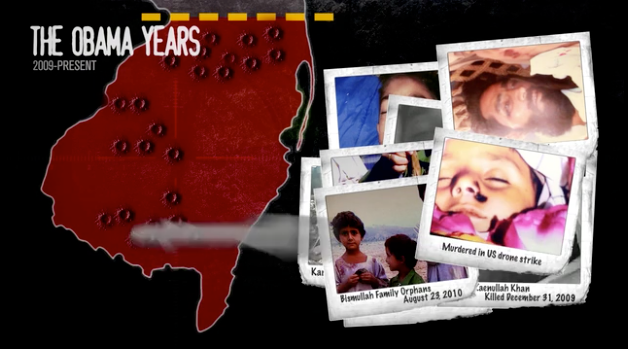by Camila Uribe Rosales and Ashley M.
Since 2004, over 2500 people have been killed in Pakistan by drone missile strikes by the U.S. Another 50, 000 have been killed by the Pakistan military or insurgent forces and millions have been displaced in the decade long ‘War on Terror.’

Karim Khan interviewed in Wounds of Waziristan. Photo: Socialist Worker.org
The documentary Wounds of Waziristan , directed by journalist Madiha Tahir, was screened this past May to conclude a two-day conference organized by the Pakistan Conference Committee, Tanqeed United South Asians at York (USAY), Pakistan Development Fund – University of Toronto. The film was shown to an audience eager to discover the truth behind the deceptions of imperialist Western media concerning contemporary Pakistan.
Wounds of Waziristan highlights the stories of people in Waziristan and the Federally Administered Tribal Areas (FATA) after the US began its worldwide “War on Terror,” with its ‘air policing’ as a key instrument major of its war and major cause of loss to affected communities.
The stories recounted in the film are heartbreaking, as family members recount people of all ages who have been killed and whose stories are mostly untold.

“Journalist, Noor Behram, started collecting pictures of those martyred to document their deaths.” A photo of the Bismullah Family orphans. Photo: MotherboardTVtumbler
There has been a complete media blackout on this war. There is no coverage of survivors or families of the dead. Tahir sees this “a dehumanization of the population.” Instead, what we get in the mainstream media are discussions of precision military tactics being upheld to rid the state of ‘terrorists’, . One article that we came across in the Asian News , (Vol 19) alluded to a ‘full-scale operation due to the ‘lawlessness’ in North Waziristan,’ supported by the Prime Minister Sharif.
The Toronto film screening was a huge success, building on discussions centred on the impact of imperialism and military attacks on the people in Pakistan. The panel included speakers, Saadia Toor, Aasim Sajjad Akhtar and Syed Azeem, who shed further light on drones and US imperialism in Pakistan.
Madiha Tahir also spoke about the tendency of media to either view Pakistan as a security state, in need of military intervention or as a charity case, for example, after natural disasters. Tahir also connected the ways Pakistan is discussed in the media back to the colonization of the region, reminding us how the people who were once viewed as savages are now known as ‘militants’ and ‘terrorists,’ dehumanizing the victims and justifying imperialism’s need for expansion in Tribal areas.

“Wounds” projects US drone strikes in Waziristan onto a map of filmmakers’, Madiha’s, home state, New Jersey; depicting the years 2009-present in the increase in drone attacks on Waziristan during the Obama years. Photo : Geographic Imaginations blog
One of the event’s speakers, Syed Azeem, told BASICS that: “Only those classes which are excluded in this structure, can stop drones.” Azeem is a member of the Campaign Against Drones in Pakistan (CADiP), which is an anti-imperialist and pro-people group of Pakistanis in Toronto who are working against drone attacks and war in Pakistan and Afghanistan. CADiP emerged after the realization that there were no human rights organizations in Canada that have called for an end to drone attacks.
“For CADiP…the key is not to start with dichotomies that already exist, but to talk to the people. This is our start: to build solidarity amongst those classes which are excluded,” Azeem told BASICS. “The nature of imperialism is very much internal to the state of Pakistan.”
Aasim Sajjad Akhtar added” “This is not a [question of] pick[ing] and choos[ing] between empire and the Taliban. That is a false binary that we need to move beyond. Until that consensus develops, in some ways, we’re missing the point…we cannot expect the solution to come from the very same people [who] are causing the problem.”
“There is a complicity among segments of progressives with imperialism. And this is not limited to the question of the use of military force.”
The film can be viewed online at DailyMotion.com.

A clip from the film. Saddam holds up a picture of his niece that was killed, along with his sister-in-law, after a drone attack on his home in 2010. Photo: Reformancers.com
Comments